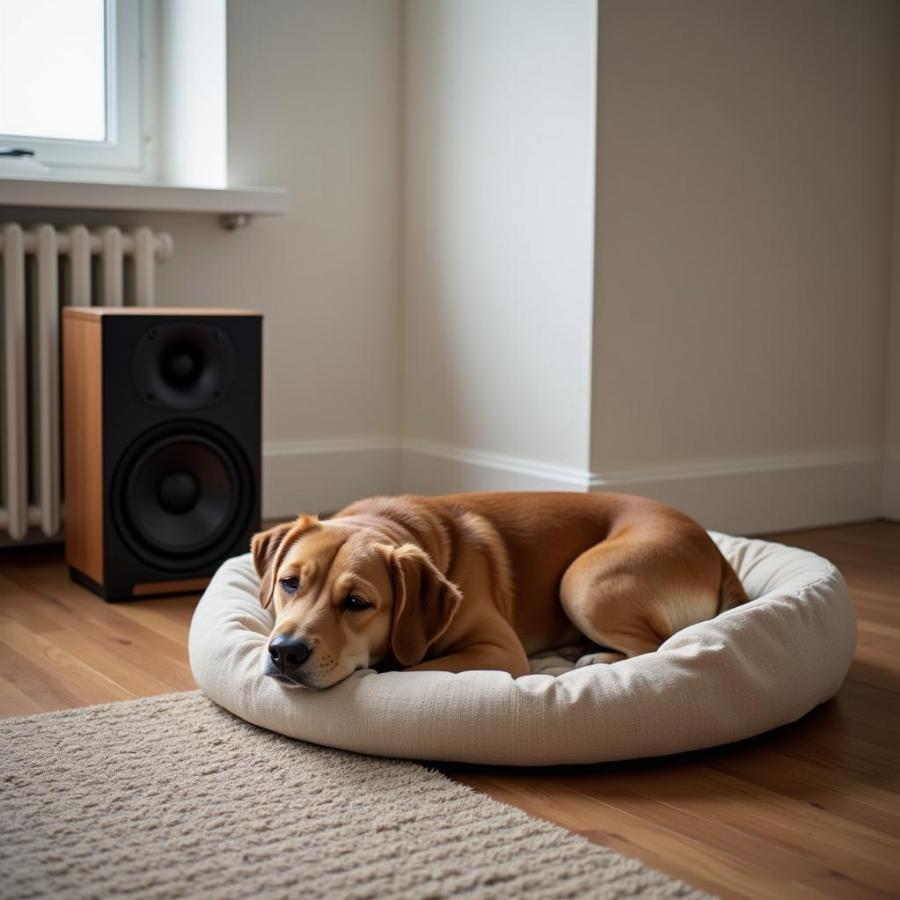The search term “dr dog setlist” might seem a bit puzzling at first, especially on a site dedicated to canine companions. While it doesn’t directly relate to dog breeds or care, the connection lies in the emotional well-being that both music and dogs bring to our lives. Many dog owners enjoy playing music for their furry friends, and understanding how music can affect them is a fascinating area to explore. This article delves into the world of music and its potential impact on dogs, offering insights into how to create a harmonious environment for your beloved pet.
Understanding the “Dr Dog Setlist” Phenomenon
Many people searching for “dr dog setlist” are likely music fans looking for the concert setlists of the indie rock band Dr. Dog. While not directly related to our canine friends, it highlights the importance of understanding user intent. Just like a well-curated playlist can enhance our mood, carefully chosen sounds can also influence our dogs’ emotional state. So, while we won’t be dissecting Dr. Dog’s musical choices, we will explore how to create a “setlist” of sounds that benefit our four-legged companions.
Creating a Calming Soundscape for Your Canine Companion
What kind of music do dogs enjoy? Classical music is often cited for its calming effects on dogs, but the genre isn’t the only factor. Tempo, rhythm, and instrumentation all play a role. Slow, melodic pieces can soothe anxiety, while upbeat tunes might energize your pup. Consider your dog’s personality and create a playlist that complements their temperament.
Tailored Tunes for Different Temperaments
Just as we have individual musical preferences, so do our dogs. A high-energy dog might enjoy playful, rhythmic music, while a more anxious dog might benefit from soothing classical or ambient sounds. Observe your dog’s reactions to different types of music and adjust their “setlist” accordingly.
What if your dog doesn’t seem to react to music? Not all dogs respond overtly to music. Some might simply ignore it, while others might exhibit subtle signs of relaxation or agitation. Pay close attention to your dog’s body language to gauge their response.
Beyond Music: Exploring Other Soothing Sounds for Dogs
Music isn’t the only auditory element that can affect dogs. Nature sounds, like rain or ocean waves, can be incredibly calming. Even white noise can help mask distracting noises and promote relaxation. Experiment with different soundscapes to find what resonates best with your furry friend.
The Power of White Noise for Anxious Dogs
White noise can be particularly helpful for dogs with noise anxieties. By creating a consistent background hum, it can mask sudden, jarring noises like thunder or fireworks. This can help reduce stress and create a more peaceful environment.
How can I tell if my dog is enjoying the sounds? Look for signs of relaxation, such as a relaxed posture, slow blinking, and deep breathing. If your dog seems agitated or distressed, try a different sound or turn down the volume.
Incorporating Sound into Your Dog’s Daily Routine
Integrating calming sounds into your dog’s daily routine can be beneficial, particularly during stressful times like thunderstorms or when you’re away from home. A consistent “setlist” can create a sense of familiarity and comfort.
Music Therapy for Separation Anxiety
Leaving a calming playlist on while you’re away can help ease separation anxiety in some dogs. The familiar sounds can create a sense of continuity and reduce feelings of isolation.
What if my dog barks excessively when I leave? While music can be helpful, it’s essential to address the underlying causes of separation anxiety. Consult with a veterinarian or certified dog trainer for guidance on managing this issue.
 Dog Listening to Calming Music While Alone
Dog Listening to Calming Music While Alone
Conclusion: Harmonizing Your Home with a Canine-Friendly Soundscape
While “dr dog setlist” might initially lead to the indie rock band, it opens a door to exploring the impact of sound on our canine companions. By understanding how different sounds affect dogs, we can create a more harmonious and enriching environment for our furry friends. Remember to observe your dog’s reactions and tailor their “setlist” to their individual needs and preferences.
FAQs about Music and Dogs
- Is all music good for dogs? No, some music, particularly loud or chaotic music, can be stressful for dogs.
- Can music cure anxiety in dogs? While music can help soothe anxiety, it’s not a cure. It’s best used in conjunction with other behavioral modification techniques.
- What are the best types of music for dogs? Classical, reggae, and soft rock are often recommended.
- How loud should the music be for my dog? Keep the volume at a moderate level, similar to background music for humans.
- Can I leave music on for my dog all day? Yes, but ensure it’s not excessively loud or disruptive.
- Should I play music for my puppy? Yes, introducing puppies to different sounds can be beneficial for their development.
- What if my dog doesn’t react to music? Not all dogs react visibly to music. Observe their subtle body language for signs of relaxation or agitation.
Beaut Dogs is your one-stop resource for all things dog-related, providing expert advice and a wealth of information to help you provide the best possible care for your canine companion. For personalized guidance and support, contact us at [email protected] (Email address). We’re here to help you create a harmonious and happy life with your furry friend. Visit us at https://beautdogs.com today!